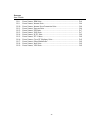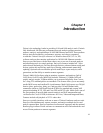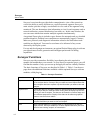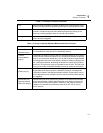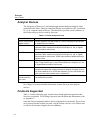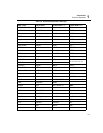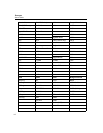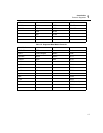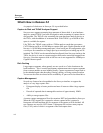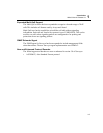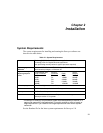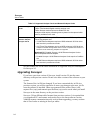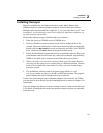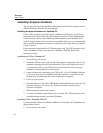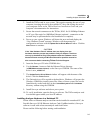
1-8
Surveyor
User’s Guide
What's New in Release 5.0
A synopsis of what's new in Surveyor 5.0 is provided below.
Capture to Disk and THGsE Analyzer Support
Surveyor now supports streaming large amounts of data to disk. A new hardware
analyzer, named THGsE, has been developed to make streaming of capture data to
disk possible. The THGsE is the essentially the same hardware analyzer device as
the THGs, with the addition of an internal disk. With THGsE, up to 80GB of disk
space is available for capture.
Like THGs, the THGsE comes with two THGm analyzer cards that can capture
CAT5 Ethernet traffic at 10/100 Mbps or capture fiber optic Gigabit Ethernet at full
line rate. A 10/100 Mbps management port, a local serial port for configuration, plus
a serial port for connection to a single port tap or a multi-port switching tap are all
included. The THGsE can be controlled and configured from Surveyor similar to the
THGs; the device is seen as a remote analyzer that can be started and stopped from
Surveyor. Note that capture to disk at full line rate is not supported for 100Mbps or
Gigabit Ethernet speeds.
Disk Caching
Large capture segments, when opened, are now saved to a Cache location on the
local hard drive. This is a useful performance enhancement since capture segments
from a remote module are now handled locally. Capture segments no longer need to
be downloaded again when decoding, filtering, editing, or saving actions are taken.
You can set the cache size based on the availability of space on his local hard drive.
Capture Management
Several new features have been added to the Surveyor interface to support the
analysis of very large capture files:
• Histogram display to locate position and area of interest within a large capture
file
• Decode of captured data in manageable sections of approximately 10MB
• Ability to merge capture files
A master capture management file with extension .HST has been added to Surveyor.
When the .HST capture file is opened or when a capture buffer is opened, a
histogram will build and then the first segment of the capture will be decoded. All
new captures are saved in .HST format. A histogram file can have many capture
files (.CAP), each of which is a segment of the total capture data.



